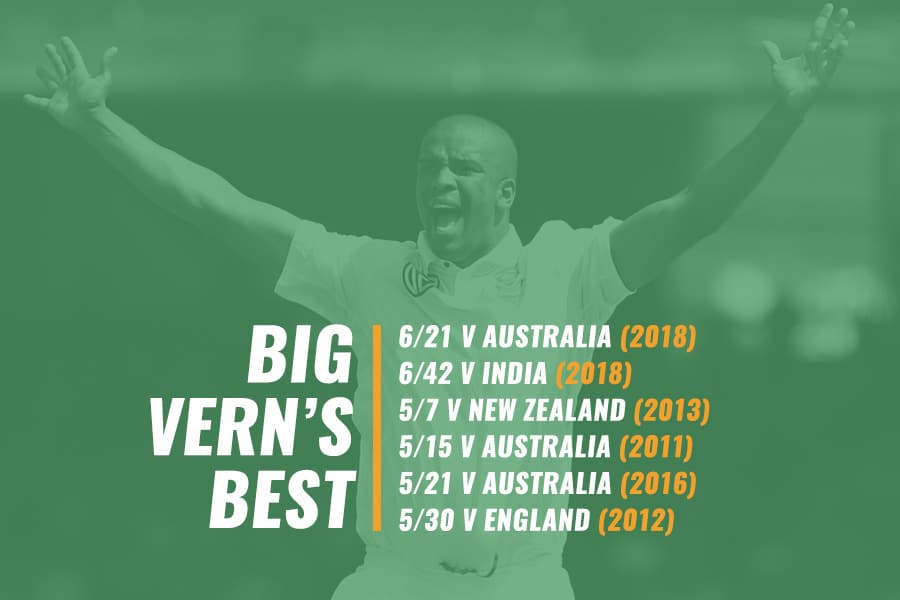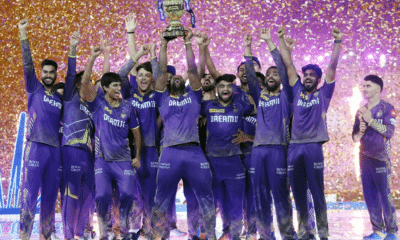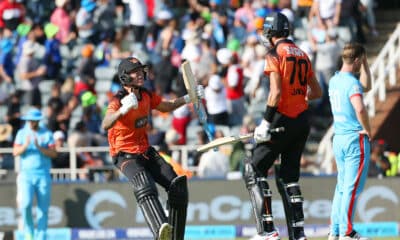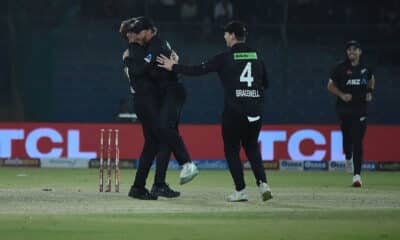
4 February 2020, by: Rohit Sankar of CricXtasy
Doing it the Big Vern Way – Vernon Philander
Ricky Ponting isn’t quite sure what happened. The ball lands on a length aimed at middle-stump and as he walks towards the ball to flick it, his eye fails to pick up a millimetre of deviation. It proves to be his downfall as the ball raps him on the pads.
Michael Clarke endures a similar fate. He is on the move, as you should be against a 120-odd km/h delivery from a trundler masked under the ‘right-arm fast-medium’ label, and misses the fraction of subtleness that causes the ball to move back into him and evades his bat. He’s trapped in front as well and before the Aussies knew it, Vernon Philander had hit them hard.
47 all out. 5 for 15 for the debutant. And an eight-wicket win for the Proteas. Australia were not quite sure what hit them then. They certainly know now. The ‘Big Vern’ wasn’t quite a phenomenon then. He was basically a trundler who topped the wicket charts at domestic levels, yet failed to grab attention.
The Cape Cobras of 2009-10 was one outstanding cricketing outfit. To stand out in the team itself was an arduous task. But Philander went one better. He finished the season as the highest wicket-taker with 45 wickets in nine first-class games at an average under 15. The all-rounder had already made his international debut by then in an ODI series in Ireland but all that came out of the series was that he had butterfingers.
“Another domestic giant who can’t cut it in international cricket.”
“Is a 120km/h pacer even a pacer?”
“He can barely catch a ball”
Voices around Philander were quick to dismiss him as a nothing player. Hailing from a country that had produced Allan Donald, Fanie de Villiers, Shaun Pollock, Brett Schultz, Dale Steyn, Makhaya Ntini and Morne Morkel, Philander barely qualified as a fast bowler. The standards in the country in the sporting realm is rather high. Sportspersons are revered in this part of the world and anybody who couldn’t muscle through was deemed a misfit.
The Proteas prided themselves on their fielding; on their ability to unearth 140km/h pace bowlers; on the grit and fight of their batsmen. The last thing they would acknowledge was a medium pacer passing himself off as a quick bowler. Philander seemed nothing more and when he picked up 45 wickets in that first-class season, it was quickly forgotten, because it wasn’t worth remembering.
Philander’s re-entry into the national setup in the format he was bound to be successful in would not have happened had it not been for a change in the coaching setup. Gary Kirsten entered the fray in 2010-11. He knew what Philander could bring to the national setup, having played alongside him at the Western Province. Kirsten knew he was something more than a mere dibbly-dobbly seamer.
Graeme Smith did not seem too convinced. Neither were the South African fans who had less than fond memories of Philander’s dropped catch from a series four years ago.
But Philander fitted in snugly in his first series where he dismantled Ponting, Clarke and with them Australia. He went on to sweep aside Sri Lanka and New Zealand and by seven Tests, he had leapfrogged the 50-wicket barrier, the quickest in 100 years.
Philander was a very un-South African pacer. He did not have the swag or swing of Dale Steyn. He did not have the pace, bounce and intimidation of Morne Morkel. He did not have the natural gift of a Kyle Abbott or the fierce raw power of a Marchant de Lange. What he had was an innate discipline to land the ball over and over and over at the very same spot and move it sideways ever so slightly.
He had a hack to getting wickets that not many fast bowlers had cracked. It doesn’t need express pace or a whole lot of skills to befuddle a set batsmen. All you need is to play mind games with his judgement of which way the ball might move. Philander had aced that. He was an absolute master at these mind games.
“I’ve had the likes of Allan Dawson around me since my debut at Western Province… they drove home the importance of consistency. Look it takes a lot of hard work to perfect that skill and even then, there are days when you don’t get it right but those performances build your character,” Philander said in a recent interview with Sportstar.

Despite concerns over his impact on less conducive wickets until the very last series he played – remember Charl Langelveldt, the bowling coach, quipping that the surface did not suit Philander after he was hidden for the vast majority of a day at St George’s Park – Philander will finish as the seventh highest wicket-taker for South Africa in Test cricket.
Of fast bowlers with 200 or more Test wickets,. Philander’s strike rate of 50.8 is only worse than seven other names – all quick, bullying pacers capable of rattling opposition sides. Philander was no less. He was a trundler, but a mean one at that. As he walks into the twilight, South Africa will take time to come to terms with the loss. They will miss Philander the new ball bowler, Philander the partnership breaker Philander the crisis man in the batting line-up, but perhaps most importantly, Philander the fighter.
The very proud Ravensmead seamer who owned Newlands and fought the odds to become a fast bowler that the Proteas fans would cheer for, deserved a better end to what was certainly a hall-of-fame career. In him, South Africa never believed. In him, South Africa never invested. Yet, for nine long years, he was an unyielding pillar in South Africa’s Test team, riding through the crests and troughs like a true South African.
JOIN BET.CO.ZA NOW AND GET 100% DEPOSIT MATCH UP TO R1000
Open your BET.co.za account here
Deposit using your preferred method
Your bonus gets added immediately!
MORE STORIES























